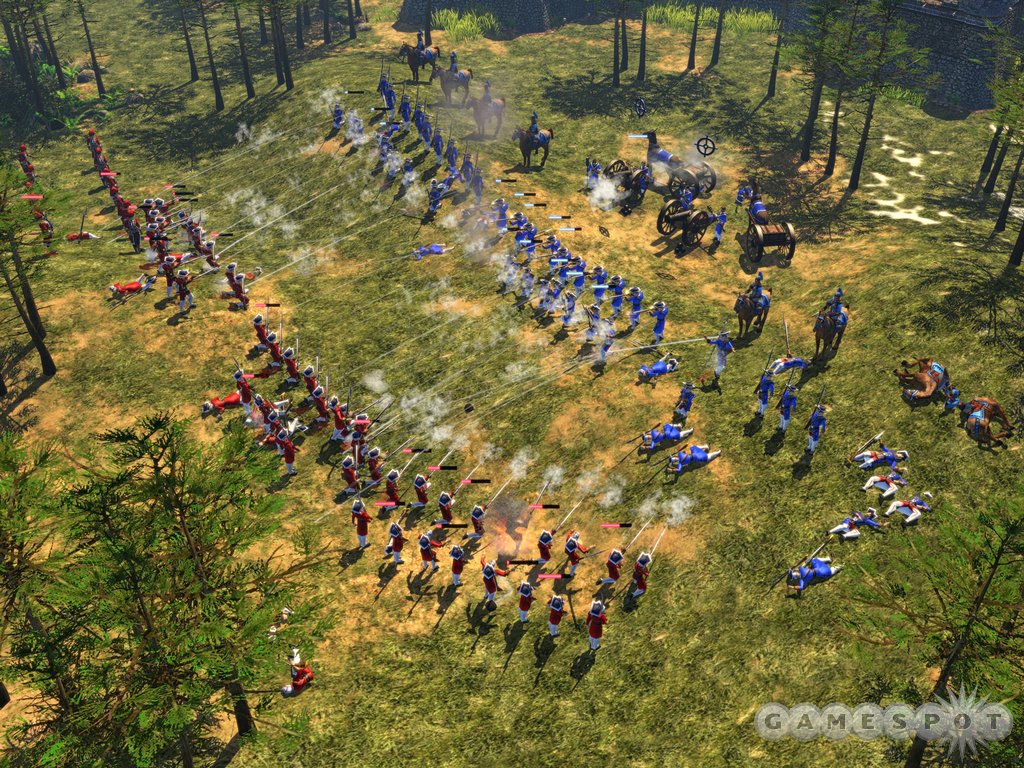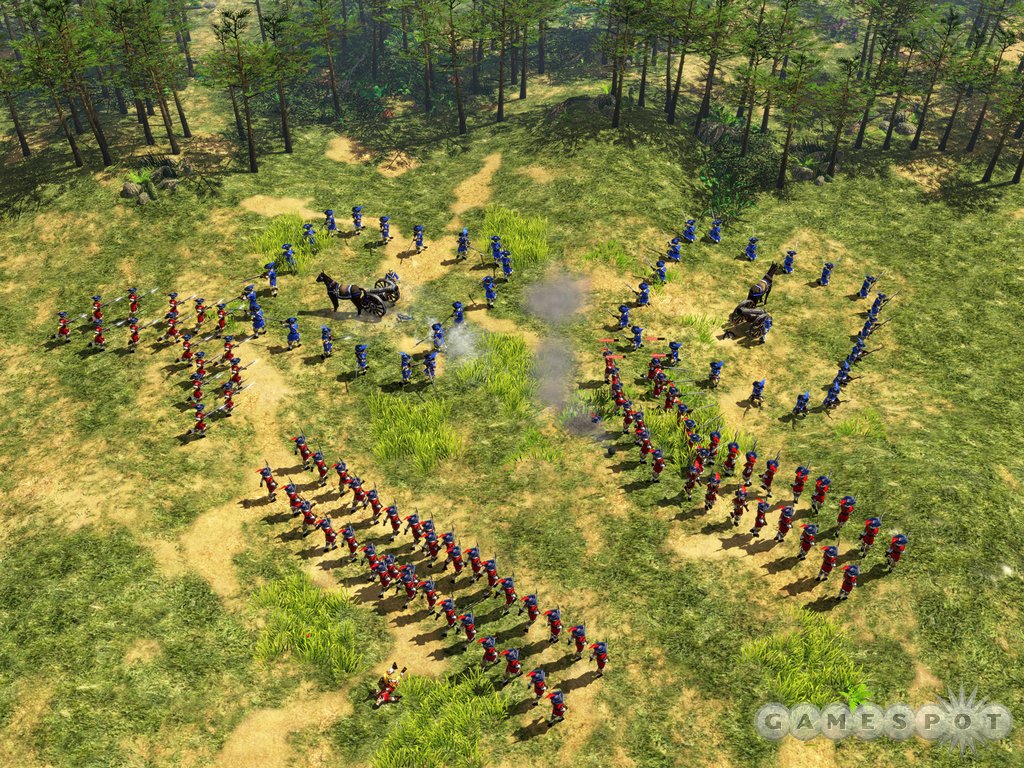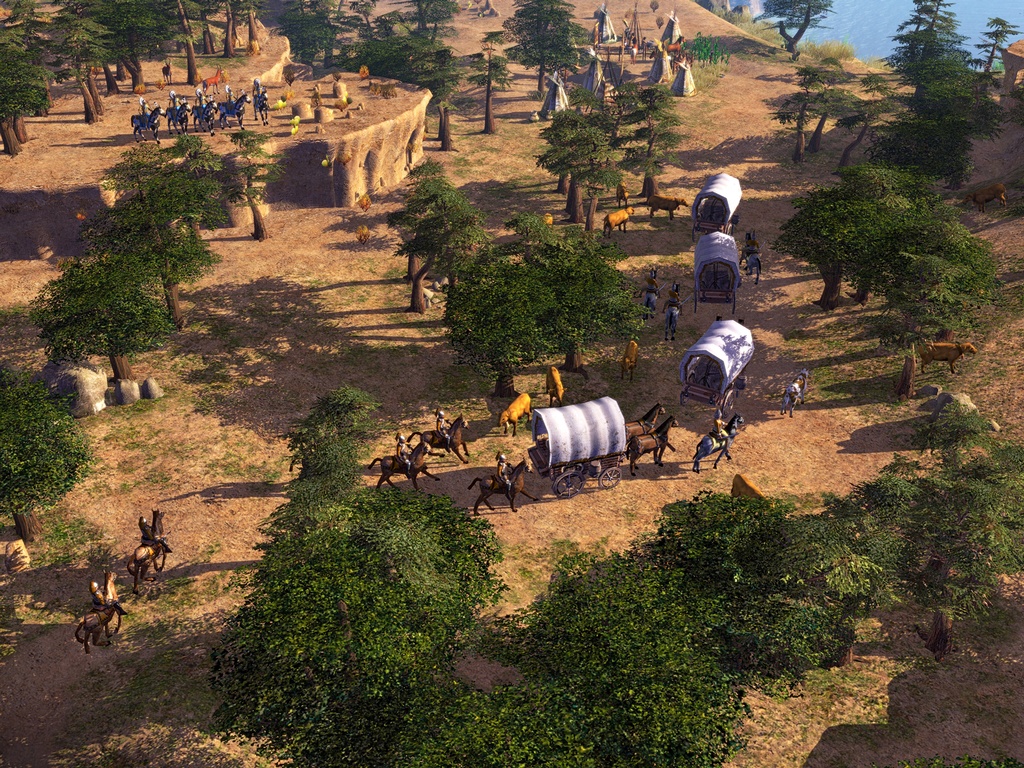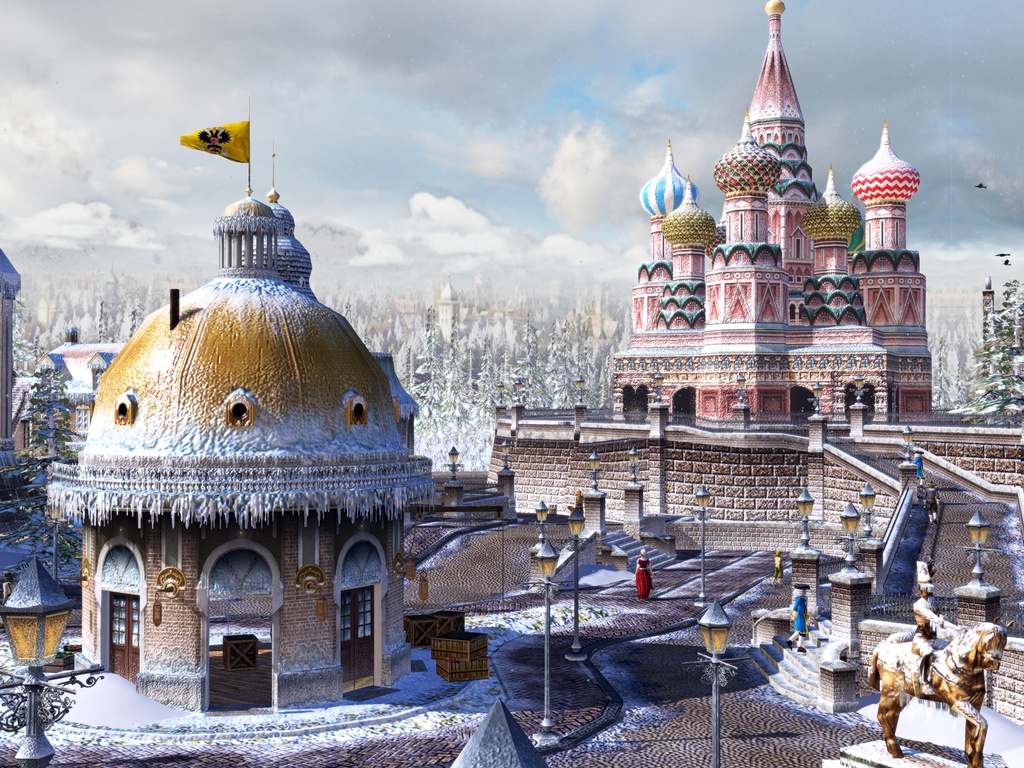Age of Empires III Updated Q&A - Cinematics, Physics, AI
Lead programmer Dave Pottinger continues to fill us in on the cutting-edge technology in this eagerly awaited real-time strategy game.
There's little doubt that Age of Empires III is going to be one of the major PC releases this winter, seeing how the third sequel in Microsoft's landmark real-time strategy series will arrive nearly six years after its predecessor did. That's a long time to wait between chapters, but it appears that developer Ensemble Studios is making up for the long gap by throwing everything, including the proverbial kitchen sink, into Age III. Whereas the first games were set in ancient and medieval times, Age III is set in the New World, during the 16th and 17th centuries. And it looks fabulous, with the early screenshots displaying some truly beautiful moments in the game. We caught up with Dave Pottinger, the lead programmer for Age of Empires III and Ensemble's director of technology, to learn more about the technology in the game.

GameSpot: What, if any, cinematic elements are being added to Age of Empires III? Is the plan to make Age III the sort of game that evokes real emotion from players during single- or multiplayer games? How will this be accomplished? With brief in-engine cutscenes, swooping camera angles, highly articulated character models?
Dave Pottinger: We've rebuilt and extended the cinematic systems that we had in Age of Mythology. We liked how big and epic the Age of Mythology campaign turned out. The in-game cinematics were a huge part of that. We've gone even bigger on those things this time around. We've got all the high-tech bells and whistles you'd expect, and a few things you wouldn't. One of the great things about our setting is that it lends itself very well to sweeping vistas and awesome landscape shots as you explore the New World. Our cinematics and campaign take full advantage of the sense of awe created by those things.
GS: Tell us about how the game's new technology is being used to augment gameplay. For instance, can we expect to see real-time weather effects, like rain that actually affects your soldiers' or cities' performances? Burning buildings that spread flames to nearby structures? Water physics that actually affect the handling of ships at sea?
DP: The biggest example where the new technology affects gameplay is in the physics. The first time you see a heavy cannon blast a musketeer over a town center only to have the musketeer's limp body come to rest on the apex of one of the gables is when you've discovered something new and cool. We're still figuring out the right mix of gameplay versus eye candy for stuff like that, but we are experimenting with some neat ideas. The new technology has also created a huge impact on the gameplay, through indirect means, as well. The game looks so great just running that we felt it critical to add more animations and better unit behavior for things such as combat and movement. Those clearly affect gameplay, but they also might not exist if the rest of the game didn't look so hot.
GS: We understand that the graphics engine is not only being used to render huge, realistic environments, but also to render soldiers, buildings, and just about everything else in tremendous detail, even when viewed up close. Since Age III is a real-time strategy game, and players will probably spend a good deal of time playing from a zoomed-out view, why this attention to detail? What does it add to the game? Better differentiation between different units? Better differentiation between different ages?
DP: An attention to detail is something near and dear to our definition of the Age of Empires franchise. When we first demoed Age I to everyone, we blew them away with details like chariot riders being thrown from chariots when they died. The cool thing is that, now, we're doing that in real-time 3D as opposed to the 2D sprite system from the Age I era. The Age franchise is also about giving players options. If they want to play random map games against the computer player, they can get that. If they want a rich story experience with the campaign, they can get that. If they want to test their mettle online, they can get that, too. That philosophy is all over the game, so graphics get that treatment, too. If you want to zoom in, you can do that. If scenario designers want to either rotate buildings for variation or use higher polygon models, they can do that, too. So, I guess I'd say it just helps round out the game. We put a lot of stuff in every Age box; this is just one of those things.
GS: Tell us about the tech that's being used for the game's artificial intelligence in battle. Is the plan to realistically model the marching formations and tactics of soldiers of the day? Or morale in battle? Will soldiers be predisposed to act as they did in specific historical battles? How in-depth will the AI get?

DP: That's an interesting question. It's unlikely we'll get down to modeling morale; we like units that do what we tell them to do too much for that. But, we have spent a great deal of time on research and development for some very cool combat innovations. The combat system in Age III is all new. One of the big changes is that it's very group-based. People expect this time period to deliver musketeers standing in volley formation, cavalry charging into combat as a big group, and infantry forming their collective lines to defend the precious cannons as they shell the unlucky enemies. We set out to build a group combat system that gives players more-interesting tactical control than previous real-time strategy games. We wanted to fix the, "Hey, I'll screw up pathing by just micromanaging my units all around the combat"-type of thing. We did that pretty quickly, actually. The hard part has been taking that and making it feel like an Age game in terms of user control and flexibility. I think we've finally rounded that corner just recently. It's very, very cool to play right now.
Random Acts of Cartography
GS: Could you tell us about the AI that's going into creating the behavior of your rival nations in the game? Will they have genuinely different play styles depending on what kind of resources or landmasses (water or no) are available? Can we expect to see computer-controlled nations also favor the kind of strategies they did historically? 
DP: Yes and yes on those last two questions. We've always been very proud of our noncheating AI in the Age series. But, like just about every other area of the game, we've upped the bar on that this time, too. We started with the AI from Age of Mythology and have spent a ton of time specifically focusing on adding "fun play styles" and identifiable personalities to play against. The goal is to make you feel like you're really playing against Napoleon, snotty attitude and all. His battle tactics will be different from Queen Elizabeth's as well, in an obvious way. It's been an interesting challenge learning how to balance such a high emphasis on personality with the demands of an RTS computer-player AI. For example, giving Napoleon a strong personality means that we need to give you some idea of how often he's likely to rush. But, if we overdo that, he'll be too predictable to be fun. So, we've got to strike just the right balance between those two things.
GS: Tell us about the random map generator and the tech behind it. How will this tool generate realistic-looking maps to play on that actually look like the American frontier? Beyond the added replay value of having more than just pregenerated maps, what else does this utility add to the game?
DP: We've always fundamentally believed that one of the biggest reasons that the Age franchise has done so well is the random map generator. That's a very tricky and difficult piece of code to write, but it's given us our vaunted "infinite replay" value. It's cool to play on a map you recognize but yet has variation from game to game. Fairness is huge in random maps, so we have a ton of code that deals with allowing the random map scripts to specify how to place things in an interesting but controllable way. We use a lot of AI-like devices in that code--everything from simple control variables and weighted placement ranges--to influence maps and full-on pathfinding (to make sure you can get to important spots on the map from your starting town). All of that gets fed into our engine via a piece of script that even end users can modify and write. That script is essentially a little program that generates the random map as it runs. The cool thing about that approach is that it means that you can truly do anything in a random map. In terms of utility that this adds to the game, the replay value is huge. But, in the "interesting development tidbit" camp, we find that the random maps keep us a lot more honest about our code. We can't ever take any shortcuts or use scripted things because we can't rely on a designer seeing every map that we make. As a result, we have a lot more work to do. But the end result is a more robust engine.
GS: We understand the team went back and rewrote its multiplayer code for Ensemble Studios Online, which was originally built for Age of Mythology, to better cater to serious fans (rather than casual fans). Can you give us an update on the multiplayer tech and how it's filling out? What features will ESO offer players when Age of Empires III launches?
DP: Yes, that's exactly what we did. We were happy with ESO for Age of Mythology. It was our first foray into inside-out matchmaking and integrated matchmaking servers. But we just made some mistakes in what we emphasized. We underestimated how much people will learn how to use a user interface when they go online, so we simplified Age of Mythology's online interface way too much in an effort to get casual gamers online. This time around, we're building a UI that makes us and our hardcore fans happy. (The casual folks will figure it out.) We're not talking specifically about individual features yet, but it's safe to say that we've expanded and built upon every area in the multiplayer code. It's cooler, faster, safer, and more robust. Along with that, we're dedicating a specific team, post-ship, to manage the community and do updates, which is something we've never done before. Hopefully, both of those things will give us a great multiplayer experience and community for Age III.

GS: Finally, is there anything else you'd like to add about Age of Empires III's technology and graphics, or about the game in general?
DP: It rocks. We were very nervous, initially, about whether we were making the right choice in emphasizing graphics so much. Our team got freaking huge because of that, since it's not like we can just skimp on gameplay or AI. We just had to keep adding artists and programmers to get everything done. But it's very rewarding to see the results. It looks like just about every RTS game is following our lead, as well, which means we're onto something cool. And, we're going to be first.
GS: Thanks, Dave.
Got a news tip or want to contact us directly? Email news@gamespot.com
Join the conversation